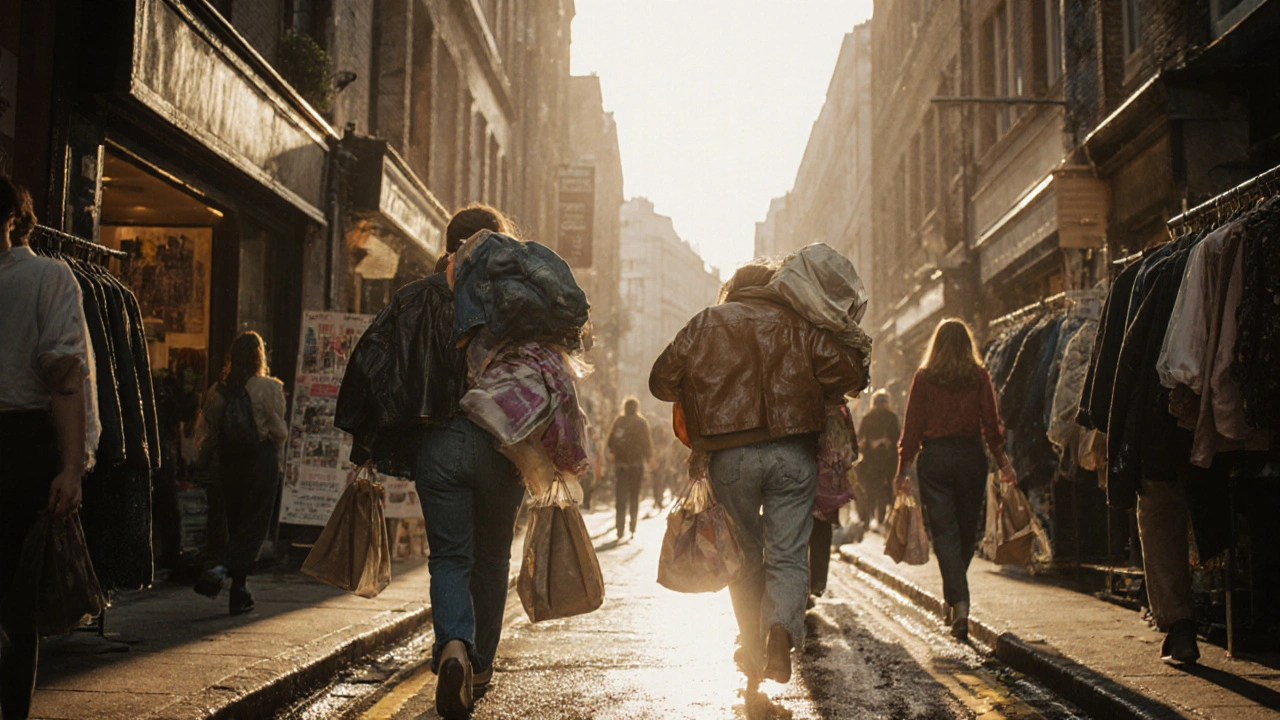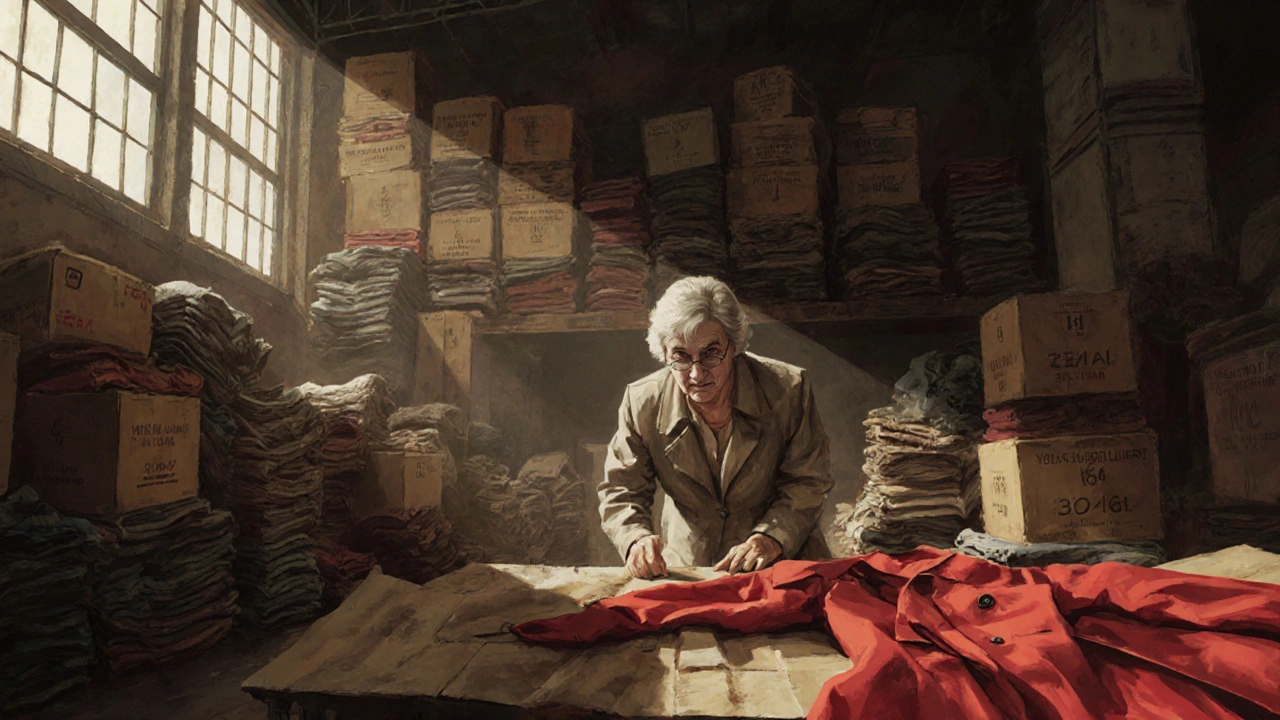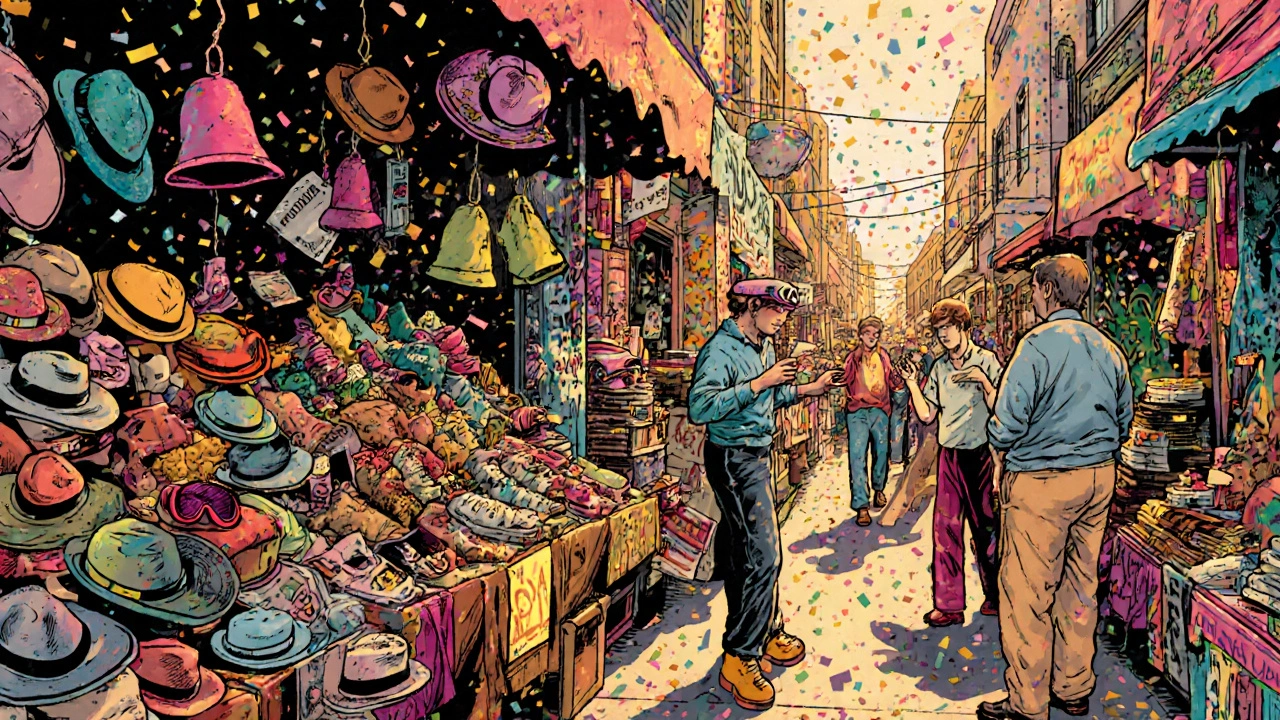
Walk down Shoreditch High Street on a Saturday morning, and you’ll see people dragging bags full of leather jackets, 90s denim, and silk blouses with labels you’ve never heard of. This isn’t just a shopping trip-it’s a treasure hunt. And if you know where to look, you can walk out with a whole outfit that no one else in London owns.
Why Shoreditch Is the Heart of London’s Vintage Scene
Shoreditch didn’t become a vintage hotspot by accident. It grew out of the punk and rave scenes of the 80s and 90s, when young creatives started repurposing secondhand clothes as a form of rebellion. Today, that energy still pulses through its narrow alleys and converted warehouses. Unlike West London’s polished boutiques, Shoreditch’s vintage stores feel lived-in, messy, and real. You’re not here for curated displays-you’re here for the surprise.
The area’s density of shops is unmatched. Within a five-block radius, you’ll find over 30 vintage and secondhand stores, each with its own personality. Some specialize in 70s disco wear. Others dig deep into 90s workwear. A few even sell entire wardrobes from deceased collectors. There’s no single rule here-just endless variety.
Start at Beyond Retro: The Gateway to Shoreditch Vintage
Your route begins at Beyond Retro on Redchurch Street. It’s the biggest, most well-known, and honestly, the most overwhelming. Don’t let the size fool you-it’s not just a mall. The store is split into themed sections: 70s glam, 80s punk, 90s grunge, and 00s fast fashion. You’ll find Levi’s from 1987 with original rivets, Japanese denim with hand-stitched hems, and army surplus jackets that still smell like campfires.
Pro tip: Head to the back racks on the second floor. That’s where the real finds hide. Staff don’t sort by size or season-they just dump everything in bins. If you’re hunting for a perfect pair of high-waisted jeans, dig through at least 20 pairs. The ones that fit? They’re usually covered in dust, but the fabric is still tight. Beyond Retro doesn’t mark prices by brand-it marks them by condition. A $300 vintage Gucci bag might be $25 if the zipper’s broken. That’s the game.
Next Stop: Rokit: Where Style Meets Sustainability
Just a two-minute walk down the street, you’ll find Rokit. It’s cleaner than Beyond Retro, with clothes neatly hung and sorted by decade. But don’t mistake order for dullness. Rokit’s buyers travel across Europe, picking up entire collections from estates and auction houses. You’ll see 1960s mod dresses with geometric prints, 1980s power suits with shoulder pads you could hang a coat on, and 1990s band tees that were only sold in Japan.
Their denim section is legendary. They have a whole wall of 1970s Levi’s 501s-each tagged with the original factory code. If you know how to read them, you can trace the pair back to the exact mill in the U.S. And yes, they’ve had customers who found jeans made in 1973 that still had the original price tag: $12.50.
Rokit also runs a repair service. If you buy something that’s almost perfect-just needs a new button or a hem-they’ll fix it for free. That’s not common in vintage shops. Most expect you to take it as-is. Rokit treats clothes like heirlooms.

Hidden Gem: Trash and Vaudeville: For the Bold and the Unusual
Turn left on Duke Street and you’ll hit Trash and Vaudeville. This place doesn’t care if you’re ready for it. The windows are covered in glitter, chains, and fake fur. Inside, mannequins wear mismatched outfits that look like they were assembled by a mad fashion designer at 3 a.m.
This is where you go if you want to stand out. Think 1992 Versace velvet blazers with rhinestone buttons, 1980s neon windbreakers with fluorescent zippers, and leather pants from a 1970s glam rock tour. The prices are higher here-$120 for a jacket isn’t unusual-but you’re not buying clothing. You’re buying a statement.
One regular here told me he bought a 1977 leather jacket with a hand-painted phoenix on the back. He wore it to a wedding. Everyone asked where he got it. He just smiled and said, “Shoreditch.”
Deep Dive: The Real Deal: Vintage for the Discerning
Down on Brick Lane, tucked between a curry house and a record shop, is The Real Deal. This isn’t a store. It’s a warehouse. The door is unmarked. You need to ring a bell. Inside, it’s like stepping into a time capsule. Clothes are stacked floor to ceiling in cardboard boxes. No hangers. No labels. Just piles of fabric.
They specialize in 1950s to 1980s workwear: mechanic’s overalls, nurse uniforms, factory jackets. But they also have rare designer pieces-like a 1974 Yves Saint Laurent trench coat, still in its original tissue paper. You won’t find this kind of stuff on Etsy. You won’t find it in Paris. This is the kind of place that fashion students from Central Saint Martins come to study.
There’s no fitting room. You try things on in the middle of the floor. The owner, a 68-year-old woman named Maggie, will stand there and tell you if something looks right. “That coat’s too big,” she’ll say. “But the sleeves? Perfect for a man with your shoulders.” She’s been doing this since 1981. She knows fabric like a doctor knows bones.
End at The Vintage Market: A Final Sweep
On Sundays, the alley behind Columbia Road turns into a pop-up vintage market. It’s not always open, but if you’re there on a weekend, don’t miss it. Dozens of small vendors set up stalls with their personal collections. One guy sells only 1960s hats. Another has 200 pairs of 1980s platform shoes. You’ll find things you didn’t even know you wanted: a 1972 leather-bound journal, a 1991 Nintendo Game Boy, a pair of 1985 ski goggles.
Prices here are negotiable. If you buy three items, the vendor will usually knock off 20%. Bring cash. Most don’t take cards. And if you see something that makes you pause-buy it. You won’t see it again.

What to Wear When You Shop
You’re not here to look like a tourist. Wear comfy shoes-lots of walking. Jeans and a plain tee. No logos. You want to blend in so the staff don’t assume you’re just browsing. Bring a tote bag. Most stores don’t give out bags, and you’ll need to carry your finds.
And here’s the real secret: don’t go alone. Bring someone who knows your style. You’ll miss things when you’re alone. Someone else will spot a jacket you’d never notice because it’s not your usual color. And they’ll tell you if it actually suits you.
How to Spot a Real Vintage Piece
Not everything labeled “vintage” is actually old. Here’s how to tell:
- Check the tag: Real vintage has woven labels, not printed ones. Look for “Made in England,” “Made in Japan,” or “Made in USA.”
- Look at the stitching: Hand-stitched seams are a sign of older garments. Machine stitching from the 90s looks uniform but cheap.
- Check the zipper: Metal zippers from the 70s and 80s are heavy. Plastic zippers? Probably post-2000.
- Smell it: Old clothes have a faint musty scent. New ones smell like chemicals.
- Research the brand: If you don’t know the label, Google it. If it only exists after 2005, it’s not vintage.
Final Thoughts: It’s Not About Bargains
Shoreditch isn’t about finding the cheapest thing. It’s about finding something that means something. A coat your grandmother wore. A dress from a band you loved in high school. A pair of boots that fit like they were made for you-even if they were made in 1989.
People come here to escape fast fashion. To own something that’s been loved before. To wear a story, not a logo.
Go with time. Go with patience. Go with curiosity. And if you leave with one perfect piece that no one else has? That’s the whole point.
Is Shoreditch vintage shopping expensive?
It depends. You can find a $5 T-shirt from the 90s or a $300 leather jacket from the 70s. Most people spend between £20 and £80 for a full outfit. The key is knowing what you’re looking for. If you’re patient, you’ll find pieces that cost less than new fast fashion but last ten times longer.
What’s the best day to go vintage shopping in Shoreditch?
Tuesday to Thursday are quietest-less crowds, more time to browse. Weekends are busy, but that’s when the Columbia Road market opens. If you want the full experience, go on a Sunday morning. If you want to avoid people, go midweek.
Can you return vintage clothes in Shoreditch?
Almost never. Most stores sell items as-is. That’s part of the deal. Some, like Rokit, offer free repairs if something breaks later. But returns? Don’t count on it. That’s why trying things on and checking seams before buying is so important.
Are there any vegan-friendly vintage stores in Shoreditch?
Yes. Many stores now label items as “vegan-friendly” or “no leather/fur.” Trash and Vaudeville has a section for faux fur coats and synthetic leather. Beyond Retro also sorts items by material. Look for “polyester,” “cotton,” or “rayon” tags. If you’re unsure, ask. Most staff are happy to help.
How do I know if a vintage piece is worth keeping?
Ask yourself: Would I wear this in 2025? Does it fit my body? Does it make me feel confident? If the answer is yes, it’s worth keeping-even if it’s torn. Many vintage pieces can be repaired. If it doesn’t spark joy or suit your style, let it go. Vintage isn’t about hoarding-it’s about curating.